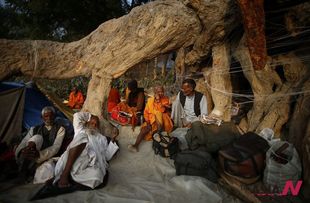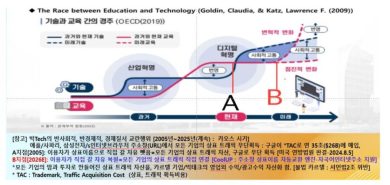‘Let leaders feel Korean culture’

- World leaders discuss ways to reduce the risk of nuclear terrorism in this photo taken at the inaugural Nuclear Security Summit in Washington in 2010. With the second summit slated for next month in Seoul, the government and experts are making last-minute efforts to create the ideal conference venue and atmosphere with high-end technologies.
 The 2012 Seoul Nuclear Security Summit is only one month away.
The 2012 Seoul Nuclear Security Summit is only one month away.
The preparatory secretariat is making last-minute efforts to successfully host the meeting so that humankind can inch closer to the advent of a nuclear terrorism-free world.
World leaders attending the second summit of this kind on March 26-27 at COEX Contention Center will also seek a global consensus to ward off possible illegal trafficking of enriched uranium and promote safety of nuclear power plants.
Dozens of Korean experts are working with the secretariat for complete readiness of matters ranging from agenda setting, venue setup, media promotion to entertainment, food and beverages as well as conference interpretation.
The Korea Times interviewed two experts who are respectively engaged in entertainment events and venue setup. They didn’t know each other and worked independently, but the two had very clear common ground in mind: Korean culture promotion at the summit.
 Sohn Jin-chaek is a veteran theater director overseeing entertainment events to be staged during the meeting.
Sohn Jin-chaek is a veteran theater director overseeing entertainment events to be staged during the meeting.
The general director at the National Theater Company of Korea said all the events in the making are designed to “help leaders feel what Korean culture is.”
“To be staged are the essence of Korean culture,” Sohn said. “They (the events) were created based on the country’s well-known traditional music and performances.”
Five events will be offered during the two-day summit with each running for about 30-40 minutes, he said. About 40 talented musicians and performers were selected and have been undergoing tough training to show leaders the “true beauty of Korean culture,” the director said.
Unlike previous high-profile meetings held in Korea that included star-studded events, the upcoming one will feature not only renowned singers and performers but also obscure yet talented newcomers, he added.
The summit has little time exclusively reserved for cultural events so that the audience will see the shows before or after dining, according to the secretariat. This challenging condition led the 65-year-old to brainstorm how to “show Korea” effectively despite the two obstacles: distracting atmosphere and a short period of time.
“Basically, the cultural events should not distract leaders from chatting or doing their work in their seats as part of the audience, which means making the venue a cozy location to foster communication,” he said. “I’ve selected songs and performances to meet the goal.”
The director went on to say that the selected works of art will help create an atmosphere where the audience feels as if they are listening to calming music and chatting while sitting in a cozy garden of Korea’s traditional house or “hanok. “
“This will help the leaders recognize the peace-loving nature of Korean people. Also this nature is in line with the summit’s main agenda,” Sohn said.
He said he believes in the power of art in changing the world and the summit is no exception.
“Art is a universal tool to relieve people from stress in their lives and boost face to face communication,” he said. “Most leaders will arrive here surely extremely stressed considering the sensitivity of the meeting’s agenda. But art will help relieve this and change their way of thinking, making it possible for them to be more creative in finding a breakthrough.”
Sohn is a graduate of Sorabol College of the Arts, which merged with Chung-Ang University in 1972. After debuting as a theater director, he has gone on to produce many hit performances based on the country’s traditional culture.
In the past he served as a chief director for a massive celebration event held on the eve of the 1988 Seoul Olympics, the opening ceremony for the 2002 Korea-Japan World Cup and the 2008 inauguration ceremony for President Lee Myung-bak.
He said the remaining one month until the summit will be used for final checks on everything ranging from stage design, lighting, sound, and costume to detailed movements of each performer.
Oh In-wook is in charge of designing and decorating the three main venues for the summit ― the main conference hall, reception event hall and lounge.
The architecture professor at Kyungwon University said he tried hard so the leaders would feel as if they are sitting circled at the center of a cozy and pacific front garden of Korea’s traditional house, hanok.
“I designed the venues with the image of a hanok nestled in a pacific, moderate mountain slope, which is partially covered with white clouds,” he said. “There are heavy issues to be discussed regarding nuclear security. I hope my designs help them become more flexible in thought and creative in addressing the nuclear matters.”
His basic design concept for the main conference hall is “concentration” and for the two others is “communication.”
“Leaders will have formal discussions in the main conference hall with a great level of concentration. Given this, the interior of the hall should help maintain the mood by controlling the lighting, sound, visual-aid equipment and other external conditions,” the professor said. “But the two other venues _ reception event hall and lounge _ are different in function. They exist for informal communication. Someone may seek relaxation there. And someone may hold casual talks with other leaders, which I think is more productive than overly formal meetings when it comes to such thorny issues.”
 To create a talks-friendly atmosphere, he said, a great portion of the interior and furniture will be painted in sky blue and white.
To create a talks-friendly atmosphere, he said, a great portion of the interior and furniture will be painted in sky blue and white.
He said he thought and thought for months to find decoration items that would help promote Korean culture in the halls soaked with the two tones of color.
“Finding the proper level of decoration with Korean images was a tough job,” he said. “If the decoration with Korean items is excessive, it may fail to attract the attention of the leaders,” Oh said. “If the intensity is too low, they may feel nothing about Korea.”
One of the items he picked up was “Jogakbo,” a traditional square blanket made of multiple small, colorful fabrics, which in the past people used to carry heavy material.
“Jogakbo is a very Korean item, which doesn’ t exist in China and Japan,” he said. “Various colors of Jogakbo will help brighten the mood. In addition, this is a rare product materializing the goal of the summit.”
He said each small piece of fabric represents each participating country. Jogakbo is a patchwork of different colored fabric used to carry a heavy material.
“This fabric has the same quality as the summit where leaders from 50 countries gather in one place to address the heavy issue of nuclear security,” he said.
Oh underscored that his venue design is eco-friendly, saying almost all the materials to be used during the summit will be donated to charities and public schools when it ends.
“Many materials used during the G20 Seoul Summit in 2011 were thrown away since there was no plan how to reuse them afterward,” he said, referring to his involvement in the G20 Summit. “The donation will help the government reduce the amount of trash and save costs.”
On top of the G20, Oh served as the chief venue designer for the 2005 Asia-Pacific Economic Cooperation (APEC) in Busan and the 2009 ASEAN-Korea Commemorative Summit in Jeju Island.
He said the production of furniture and other elements are almost completed so the venue setup will be ready five days before the summit’s opening.
“I still have a long way to go. I won’t let my guard down until the closure of the meeting,” he said. <Korea Times/Park Si-soo>






